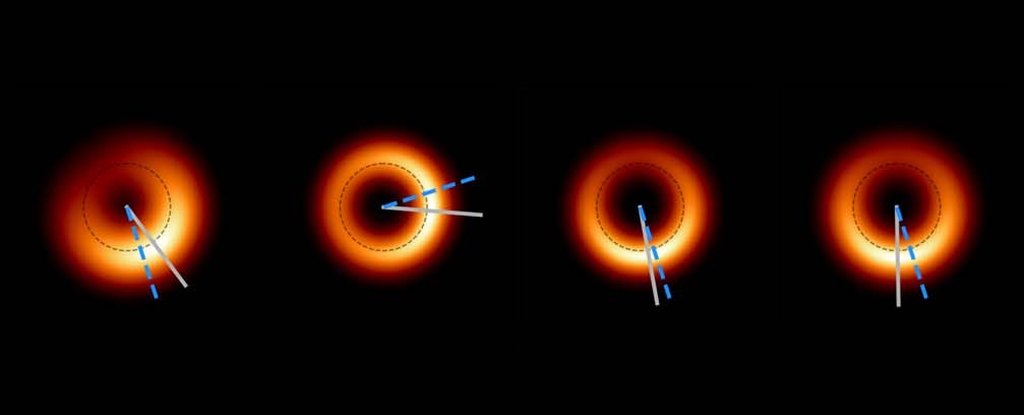
In the earlier years of the Event Horizon Telescope project, though, the team took observations of the target - the black hole at the centre of a galaxy called M87, located 55 million light-years away - using prototype telescope arrays.
But, when astronomers were seeking to determine how the ring around the black hole changes over time, they found there was enough data to confirm a simulation of how the ring's brightness fluctuates.
"Last year we saw an image of the shadow of a black hole, consisting of a bright crescent formed by hot plasma swirling around M87*, and a dark central part, where we expect the event horizon of the black hole to be," explained astronomer Maciek Wielgus of the Harvard Smithsonian Center for Astrophysics.
And they found, as predicted by general relativity, that the black hole shadow - the circle in the middle of the glowing golden ring - was persistent throughout the time period, maintaining the same diameter over years.
That ring is made up of dust and gas that's swirling around and feeding into the black hole in an accretion disc, and the uneven brightness is another effect predicted by general relativity, called the Doppler effect.
Those are powerful streams of plasma from the inside of the accretion ring that are accelerated around the outside of a black hole's event horizon and launched into space at relativistic speeds.
"The enhanced imaging capabilities provided by this extended array will provide a more detailed view on the shadow of the black hole M87* and on the innermost jet of the M87 radio galaxy," said astronomer Anton Zensus of the Max Planck Institute for Radio Astronomy in Germany